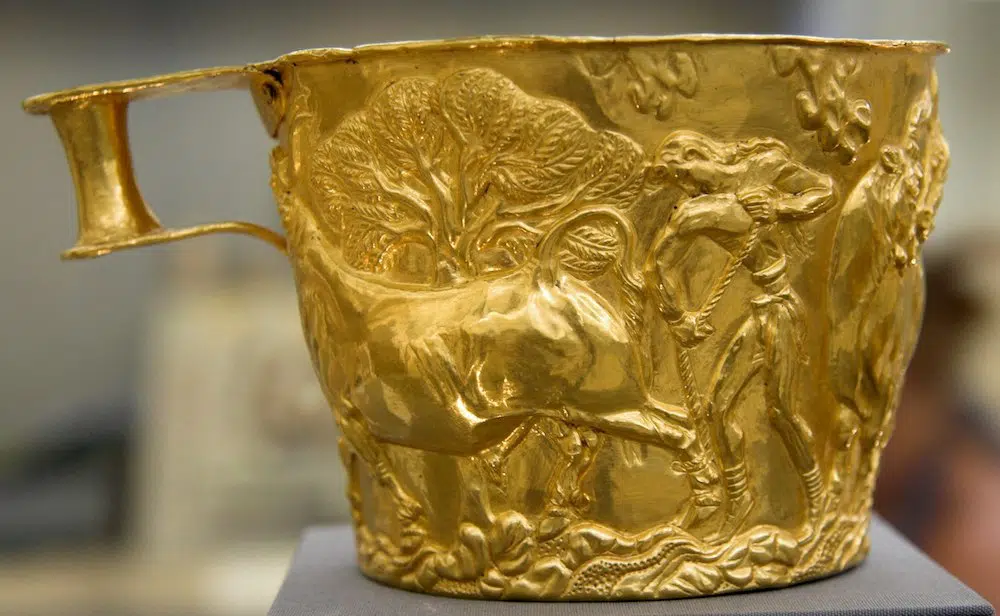
The pair of stunning gold cups, called the “Vapheio Cups,” are considered masterpieces of ancient Greek art. The expertly crafted gold objects were found at the Vapheio tholos tomb in Lakonia, Greece in the late nineteenth century.
The pair of cups, which were created over 3,400 years ago, were the product of advanced Creto-Mycenaean metalwork. The delicate objects feature scenes dominated by a bull, which was a very important animal in many Bronze-Age civilizations in the Mediterranean.
The Vapheio Gold Cups
On the first cup, a scene depicting the peaceful capture of a bull wraps around the entire object. A man is shown tying a rope around the animal’s leg as it is in the process of mating with a cow, as three other bulls graze in the background.
The second cup shows a less peaceful scene, as a bull is depicted captured in a net as another, which has likely escaped, attacks two hunters. A third man is shown fleeing the area.

The intricately-designed cups were previously believed to have been crafted by the same person, who used difficult techniques to emboss the cups with fine details.
However, most experts now believe that two different artists made the cups, as the first cup is believed to be more expertly adorned than the second.
There is some debate as whether the cups are Minoan or Mycenaean. Many scholars believe that the cups depict methods of capturing bulls for the famous Minoan tradition of bull-leaping, and others have linked imagery in the cups to those found on the walls of the famous Minoan palace of Knossos on Crete.
Some believe that the first cup is Minoan, while the other is Mycenaean. Artifacts from both the Minoan and Mycenaean civilizations were found at Vapheio, where the cups were uncovered.
Vapheio
The site of Vapheio is located in Lakonia, Greece, just five miles south of the city of Sparta.
Vapheio is known for its tholos tomb, which is shaped like a beehive. Such tombs are characteristic of ancient Mycenaean burials.
The tholos at Vapheio was excavated by Greek archaeologist Christos Tsountas in 1889, and countless Minoan and Mycenaean objects were found at the site, all of which were given to the National Archaeological Museum of Athens.
The artifacts found in the tomb were from varying periods and many were not from mainland Greece. Objects found there were made of gold, silver, bronze, iron, and even crystal, and many seals and rings found there may have been Minoan.
In fact, Vapheio comprised the largest find of such Mycenaean and Minoan seals in the entire Aegean.
Much of the pottery found at the site dates back to 1500-1450 BC, but the gold, including the cups, and gems discovered at Vapheio are believed to be much older.
Tragically, the tomb itself was almost completely destroyed by 1911, but many of the objects found there are on display at the National Archaeological Museum in Athens.
See all the latest news from Greece and the world at Greekreporter.com. Contact our newsroom to report an update or send your story, photos and videos. Follow GR on Google News and subscribe here to our daily email!



